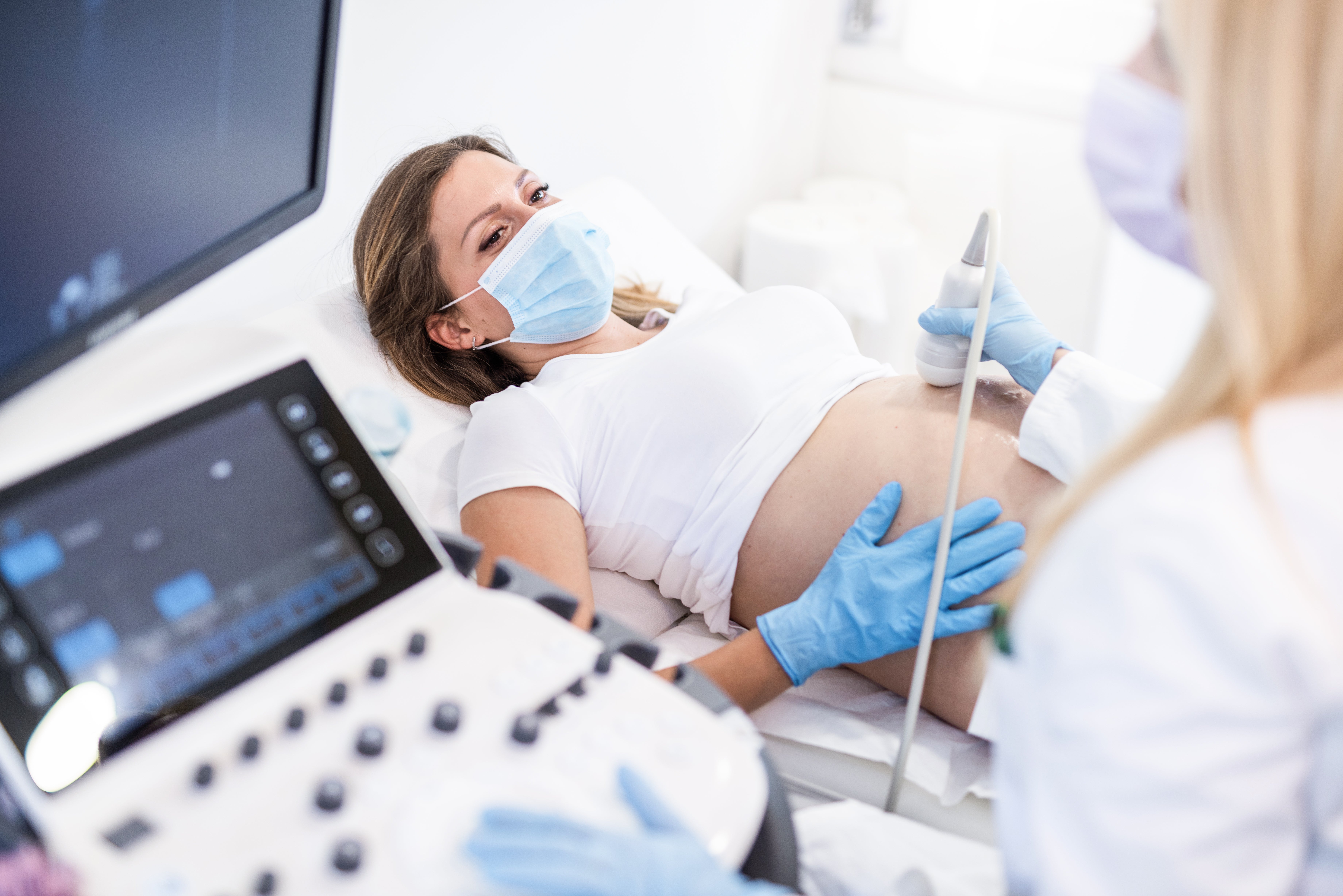The pregnant women in the Scottish Highlands being bitterly failed by a dearth of services
Exclusive: ‘Every mother in Caithness has got their own different version of an ugly story,’ one mother tells Maya Oppenheim


While pregnancy can be an anxious time for all expectant mothers, many women living in the Scottish Highlands are forced to grapple with concerns which would feel inconceivable to most women in the UK.
In Caithness – deemed one of the most outlying, rural parts of Europe – the overwhelming majority of women living are forced to make a 120-mile trip down one of the most dangerous roads in the UK to give birth.
From being stuck in a snowstorm while in labour, to spending four hours on public transport to give birth, to going through childbirth alone after an ambulance blocks your partner from accompanying you, to actually giving birth on route to the hospital, there is no shortage of childbirth stories in Caithness.
But it has not always been like this. Pregnancy, childbirth, and the postnatal period have got drastically more difficult for women in Caithness since NHS Highland downgraded a maternity unit in Wick, a picturesque town in Caithness, back in 2016. Cuts to the maternity service have resulted in the overwhelming majority of women being forced to make a 120-mile journey to Raigmore Hospital in Inverness - with campaigners repeatedly calling for an independent inquiry into why they overhauled Wick’s maternity unit.
“10 per cent can give birth in the area,” Ron Gunn, vice-chairman of Caithness Health Action Team, tells The Independent. “But 90 per cent of women have to go down to Inverness because they are having a caesarean, a forceps delivery, high blood pressure, or there is another health reason.”
Mr Gunn explains women are coming from Caithness, where the population is around 23,000, and other far-flung residential areas along the north coast to give birth in Inverness - adding that unless the birth is classed as an emergency, women are not provided with an ambulance to make the trip to give birth.
Women are instead forced to either spend two and half hours driving to the hospital to give birth or spend over four hours travelling via train or a bus. “The train only goes twice a day and the buses are not much better,” Mr Gunn adds. “There are cases where it has taken between four and five hours to get to Inverness via car because of traffic conditions. We know of a case where a pregnant woman was travelling in a vehicle which encountered engine trouble, and another case where the car actually collided with a deer.”
The Scottish Highlands are plagued with extreme weather - snow, high winds and rain rife in the winter - and daylight stretching from just 10am to 3pm. The A9, the 273-mile-long road on which women travel down to Raigmore Hospital, is often blocked with snow in winter. But even in good weather, the road is busy with holidaymakers so is also treacherous. Deer strikes are common on the A9, which is the longest road in Scotland, with a crash leading to a casualty on the A9 every three days in 2018.
Meanwhile, if the family has no access to their own vehicle and the baby decides to come at night when there is no public transport running, women only have one choice - forking out £120 for a taxi. “Babies come at all times,” Mr Gunn reflects. “There are a number of expectant mothers who had to travel down through the night.”
But what about the situation faced by women with high-risk births who are given an ambulance to transport them to Raigmore after their waters break? While at least they are spared the stress of public transport or having their partner, relative or friend navigate the lengthy and potentially dangerous road to the hospital, they nevertheless face the prospect of having to give birth alone, as technically ambulances are not supposed to transport anyone bar the pregnant woman herself.
“It must be absolutely alarming for the woman to go through that,” Mr Gunn says. “Giving birth is supposed to be one of the happiest times of your life, but giving birth over 100 miles away from your partner can’t possibly make for a good experience. Also women will have had the same midwife in Caithness for their pregnancy but in Inverness, they don’t know them.”
The dearth of maternity provision in the area also makes the postnatal period highly tricky as if the baby develops jaundice or requires any kind of health test, the mother is forced to make the trip back to Inverness. Mr Gunn told of one woman who travelled to and from hospital to have a caesarean on public transport.
“She was in hospital for two days with the caesarean,” Mr Gunn adds. “Then she had to get the train while getting over the C-section with a two-day-old baby. Her partner was at home looking after the children. That is very common. Quite often the mother goes down alone, while the partner stays with kids, and she is forced to give birth alone.”
Mr Gunn knows young families in the area who have decided to pack up their lives and move away from their loved ones due to the stark lack of maternity provision. He also knows of women who have taken the tough and ultimately life-changing decision to have no more children due to the scant support for pregnant women in the area.
Freedom of information requests shared with The Independent show births at Caithness General Hospital - the biggest medical facility in the county - have plummeted by more than 90 per cent between 2015 and 2020. A mere 15 babies were born at the hospital last year.
A spokesperson for NHS Highland notes Caithness maternity services were altered from consultant-led to midwife-led back in 2016 on the “grounds of safety”.
The representative says: “Babies born in Caithness who subsequently become unwell and need specialist care, such as at the Special Care Baby Unit or Neonatal Intensive Care Unit, require transfer to Raigmore. This presents a risk for newborns as specialist support is not on site for ongoing care.
“The potential for a baby requiring specialist neonatal input will be greater for women under consultant care, who have a more complex medical and obstetric history.”
According to the spokesperson, an independent assessment reached the conclusion risk could be reduced by transferring births which necessitate a consultant to Raigmore, while women with low-risk pregnancies still have the option of giving birth at home or opting for a midwife-led unit in Caithness. “This approach has successfully reduced the neonatal transfer rates from Caithness General Hospital,” the representative adds.
But Sharon Dismore, a mother-of-two, has a different stance on the issue, being all too familiar with the anxiety which colours the experience of pregnancy for many women in the region. While it was agreed she would be able to take an ambulance to give birth, this brought with it fears about how her partner would travel to the hospital.
“My partner had no way of getting down the road to the hospital where I was giving birth,” the 39-year-old, who lives just south of John o’ Groats, a village in Caithness, says. “My partner does not drive. We have no family up here.”
In the end, Ms Dismore found out at the eleventh hour - when she went into active labour - that her partner would be allowed into the ambulance after all as she managed to persuade the driver by showing a letter from the doctor.
“It was awful,” she adds. “It felt more stressful worrying about the journey than the actual labour itself with both pregnancies. I trust my body - it is built to give birth. I don’t trust the A9. I don’t trust not being behind a snow plough or a tourist with a camper van broken down.”
During her second pregnancy, she travelled to Raigmore in a friend’s car to be induced but was turned away due to them being short-staffed, she says. “It was a 12-hourrday door to door,” Ms Dismore adds. “Six months about down the line, I can feel my stomach in knots just talking about this. Every mother in Caithness has got their own different version of an ugly story about getting down to Raigmore. One mother was sent 500 miles as she couldn’t give birth in Inverness as they were full.”
And fortunately, Ms Dismore’s story is far less dramatic than those of some other women in the area. Take the woman who gave birth to twin babies in two hospitals 50 miles away from each other while on route from Caithness to Raigmore Hospital.
“There is no excuse for women not getting provision they need,” Nikki Wilson, chief executive of Make Birth Better, a campaign group, says. “They pay taxes and are entitled to this.”
She notes women who are not in a “safe psychologically held environment” are more likely to be traumatised by their birth. “You are just as likely to hear a trauma story about a woman who has given birth very quickly or someone who was in hospital in labour for a long time,” Ms Wilson adds. “People are generally intensely vulnerable during pregnancy. Giving birth is potentially intensely terrifying.”




Join our commenting forum
Join thought-provoking conversations, follow other Independent readers and see their replies
Comments